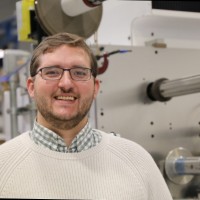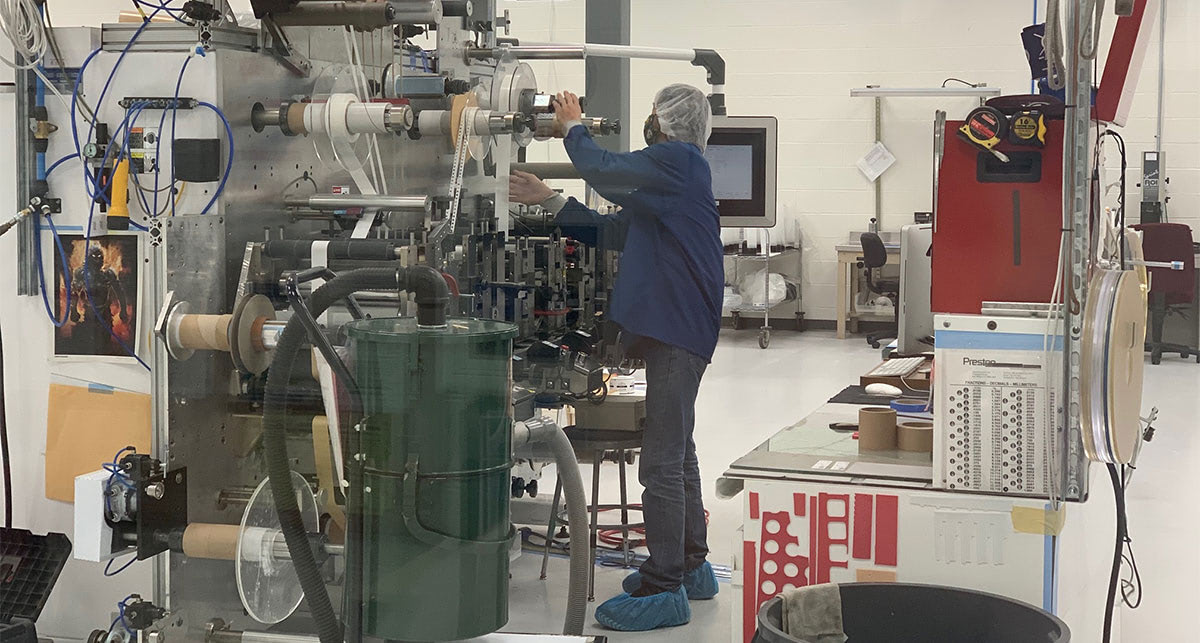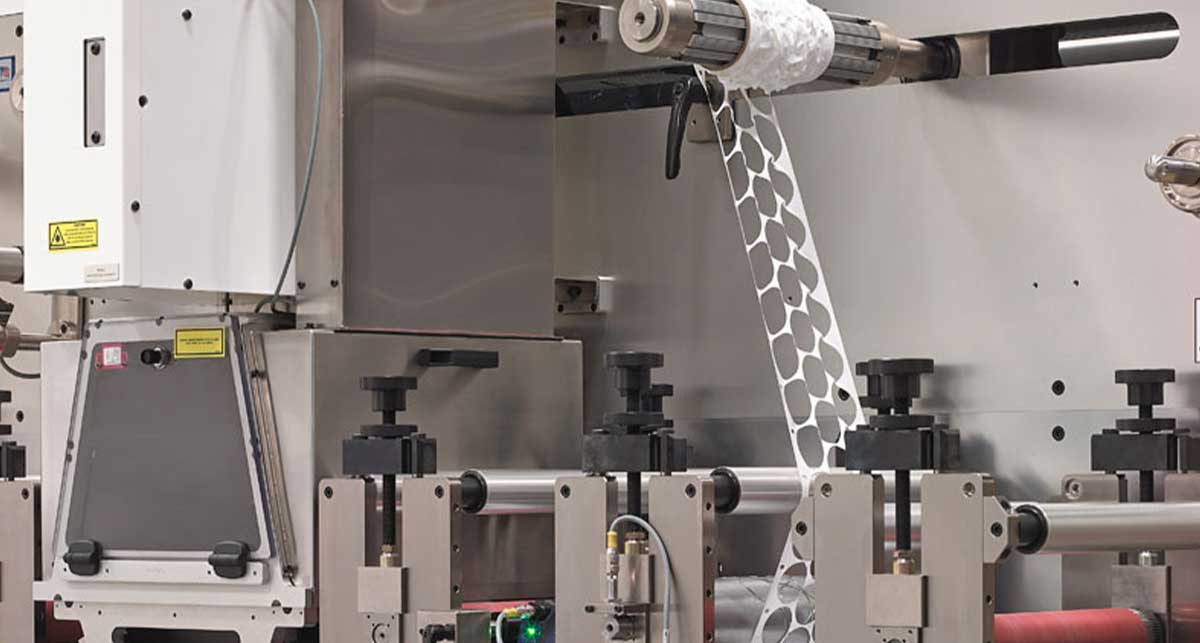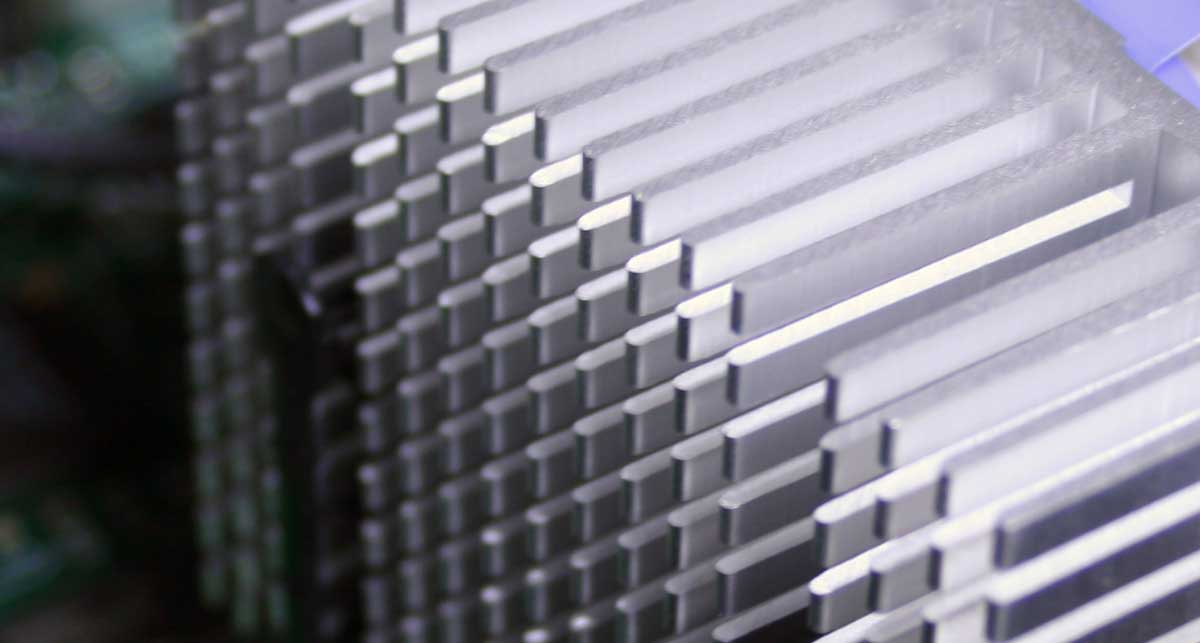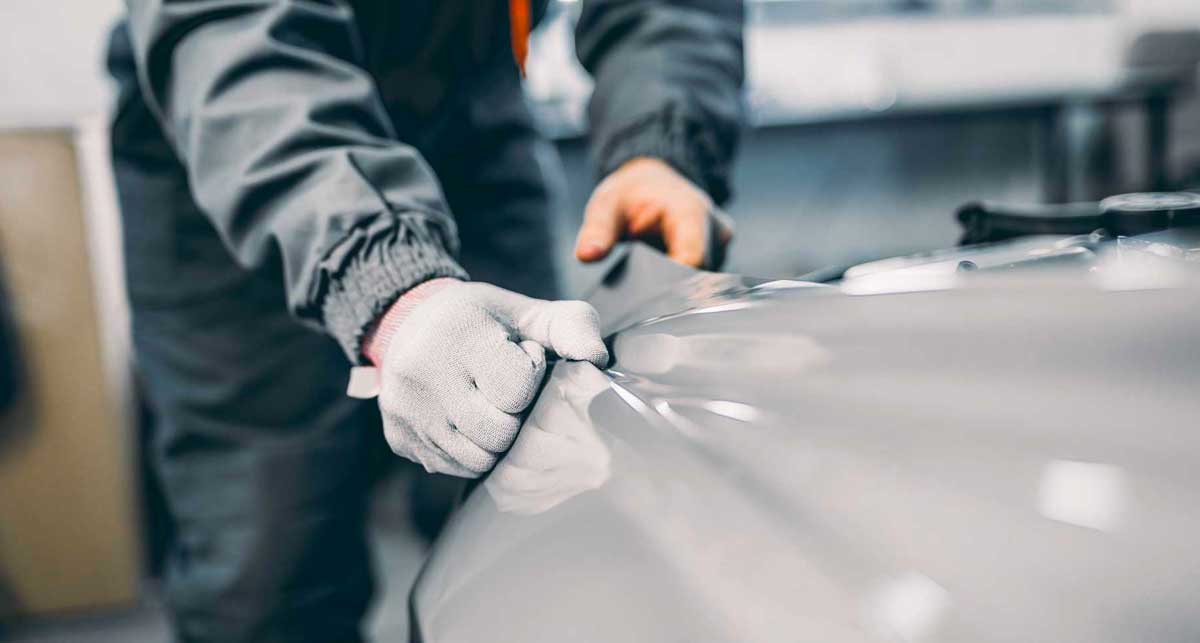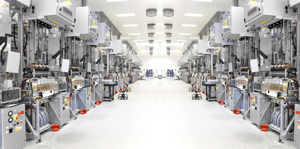Did you know that your skin can shed 30,000 skin cells a minute? Now imagine all of those precious cells flaking onto new medical and DNA tests. NOT your ideal manufacturing scenario.
In medical applications, particles in the air and the air’s moisture level can lead to bacterial growth or alter the adhesion in products applied directly to the skin. Yet, you can combat this using a cleanroom, which many manufacturers and converters (such as Strouse) possess.
Converters utilize clean rooms to ensure the safety and reliable performance of complex products. This article will help you understand ISO cleanroom certification, the industries most affected, and the importance of your converting partner being certified.
What is a Cleanroom?
Many products can be rendered defective due to impurities, such as dust/smoke, liquids, microorganisms, inadequate air quality, and other bioburdens. A cleanroom is a controlled manufacturing environment with specific, measurable air qualities that have been fine-tuned to reduce product defects.
What is ISO Cleanroom Certification?
The ISO classification system (ISO 14644-1) dictates classifications that are rated by the cleanliness level of the air inside the room. These classifications are based on the maximum allowable concentration of particles per volume (cubic foot or meter) of air. Cleanroom classification ranges from ISO 1 (the “cleanest”) to ISO 9 (the “dirtiest”). The most common cleanroom classifications are ISO 7 and ISO 8.
HOW “CLEAN” DOES A CLEANROOM NEED TO BE?
For a cleanroom to achieve ISO 7 certification, also known as Class 10,000, there must be no more than 325,000 air particles (each .5 microns in size) per cubic meter. In comparison, an ordinary room contains at least 35,200,000 particles per cubic meter, making an ISO 7 cleanroom more than 100 times cleaner.
So, why does this matter? There are a lot of applications that could have a critical failure if any sort of impurity is present. The following industries regularly use or require ISO 7 cleanrooms to avoid failures:
- Medical device manufacturers
- Electronic device manufacturers
- Aerospace product development
- Pharmaceutical compounding
Not to mention many laboratories where it's essential to ensure that the proper requirements are being followed.
However, your application might not require that. There are other standards that can produce “clean” manufacturing environments without necessitating a cleanroom. Sometimes this will be dictated by third parties like the FDA and others it’ll be a business decision based on a level of acceptable risk. Ultimately, the decision depends on your unique application.
ISO 7 CLEANROOM REQUIREMENTS
Cleanroom requirements vary based on the industry and the processes performed within the room. An ISO 7 cleanroom requires:
- HEPA fan filters
- Airlocks and air conditioners
- Heat-welded floors
- Sealed lighting
- Stainless steel bench
- Gowning atrium
Detailed ISO 7 Cleanroom Requirements
- Air cleanliness — maximum of 325,000 air particles (≥0.5µm) per cubic meter (m³); also called “Class 10,000” because the maximum equals 10,000 particles per cubic foot
- Air filtration — systems must provide filter coverage of 15-25% with at least 60 air changes per hour.
- Air flow rate — filtration system must be 9-16 CFM per square foot.
ISO 14644-1 — in 2001, replaced federal standard 209E (still used as a reference).
How Can Manufacturers Achieve ISO Cleanroom Certification?
Cleanrooms must control certain environmental variables in order to produce complex products in a safe and reliable manner.
MAINTAIN THE AIR QUALITY
Air quality is critical in cleanrooms and is the basis for ISO certification levels. Dust, dirt, and particles in the air can promote the growth of bacteria and mold over time, especially if accelerated by heat and humid environments during transportation or long-term storage of finished products.
Cleanrooms may use an industrial dehumidifier to control humidity levels. A separator filter dryer (SFD) separates dirt and air particles, filters air, and removes moisture.
TAKE PROPER PRECAUTIONS
In addition to environmental control equipment, workers may need to wear facemasks, hair and beard covers, lab coats, coveralls, or sterile gloves. Clothing must be made from nonwoven fabrics to prevent shedding material fibers from contaminating the room.
Even entering and exiting the cleanroom may have its own safety processes. Sticky mats remove contaminants from shoes. A “pass-thru cabinet,” usually equipped with a filtration system, is used to transfer products and limit the number of people who can enter and exit the room.
Should Your Converting Partner Be ISO Cleanroom Certified?
While cleanroom manufacturing isn’t necessary for every design, certain products can’t be manufactured properly and reliably outside the environment of a certified cleanroom.
Depending on the nature of your design or industry, you may wish to consult a manufacturer on their cleanroom capabilities and match this with FDA regulations to ensure that it’s a valid option for you and your products.
BENEFITS OF USING MANUFACTURERS WITH AN ISO CLEANROOM CERTIFICATION
ISO cleanroom-certified manufacturers are confident in taking on projects in the most demanding industries, such as medical device attachment and wound care, which require extreme precision while following strict manufacturing guidelines for converted goods.
Converters with this title typically have an entire team of design and development engineers, allowing them to invest the necessary time and resources for each project. A converter with a cleanroom may offer these services to meet strict regulations:
- Custom rotary, flat bed, and laser die cutting of specialty materials
- Laminating, slitting, and rewinding … all in a climate-controlled environment
- Continuous roll-to-roll manufacturing
- Assembly
- Packaging
If you’re interested in finding the right partner with a certified cleanroom, consider one that has extensive experience with material sourcing and design manufacturability.
As an experienced converter with a cleanroom, Strouse has been building custom medical, diagnostic, and other electronic goods for over 39 years.
We recognize that simply having a cleanroom isn’t enough to guarantee product success, which is why we work to help build custom products at every stage of the development process for the most cost-efficient and safe practices.
Consider contacting us for a quote today or exploring ISO cleanroom certification and other manufacturing topics in our Learning Center.
Originally published: December 7, 2020
